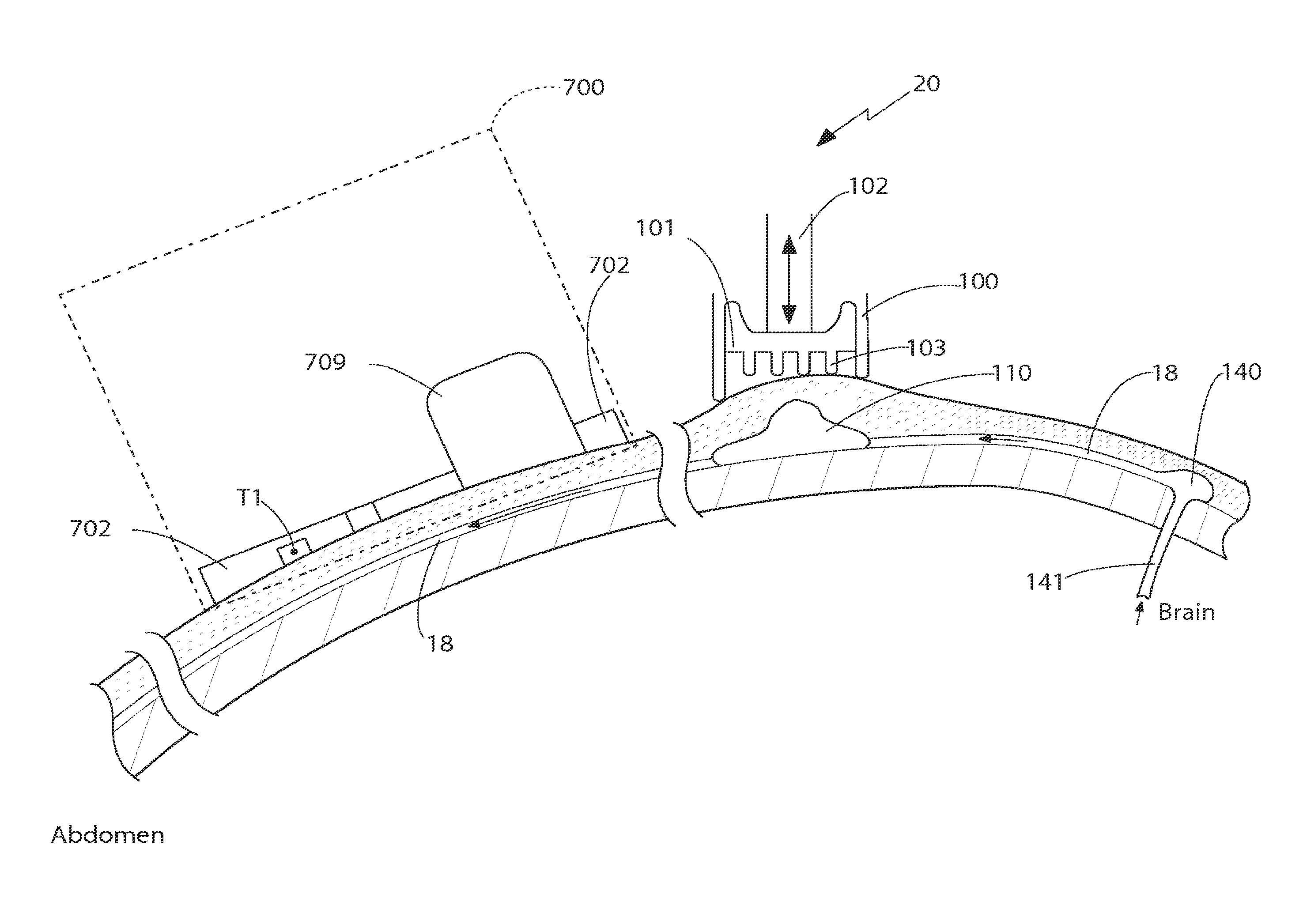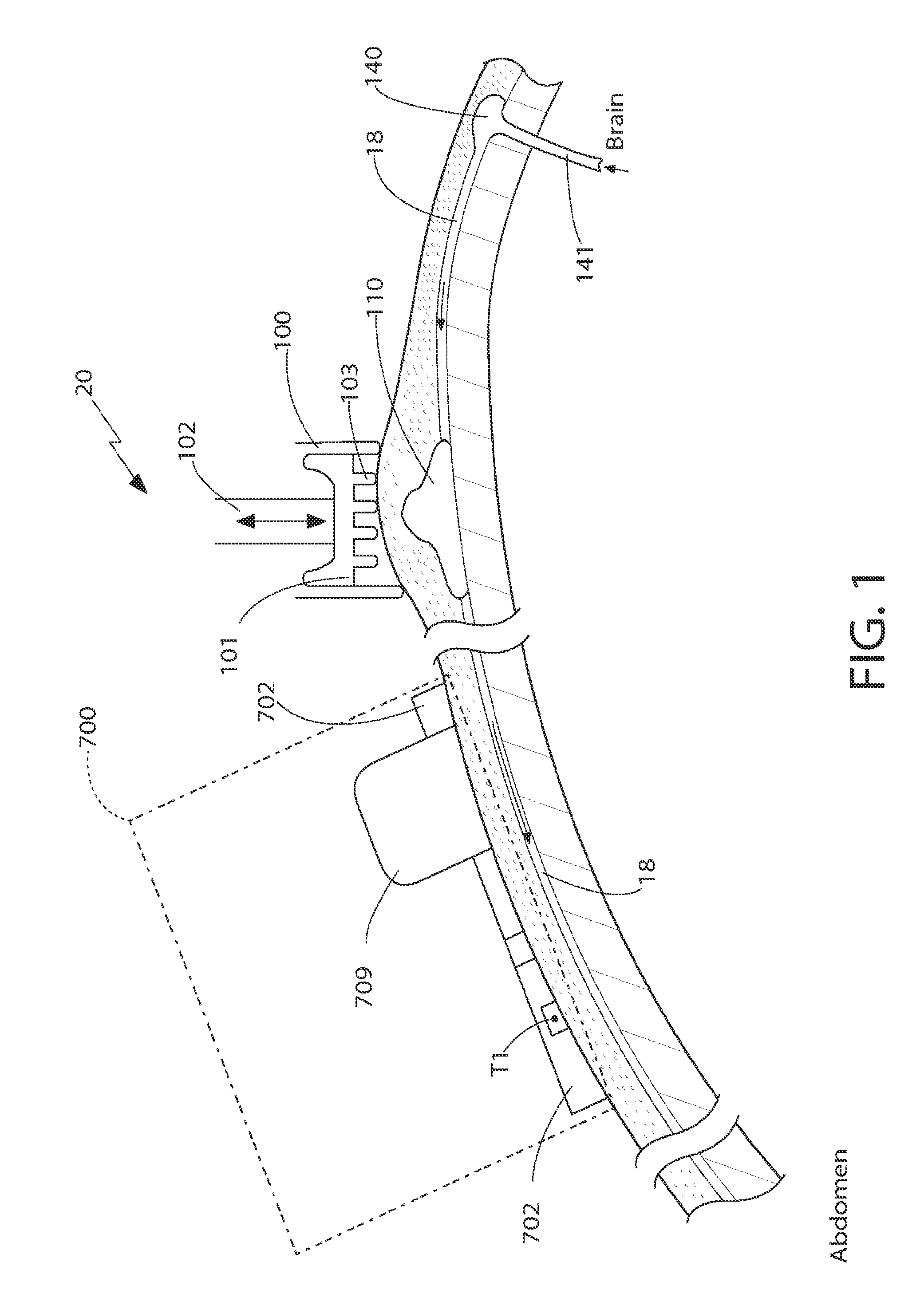CSF shunt flow enhancer, method for generating CSF flow in shunts and assessment of partial and complete occlusion of CSF shunt systems
a shunt and enhancer technology, applied in the field of cerebrospinal fluid shunts, can solve the problems of progressive neurological dysfunction and death, shunt failure is still almost inevitable during a patient's life, and the need for shunt revision needs to be reasonably established
- Summary
- Abstract
- Description
- Claims
- Application Information
AI Technical Summary
Benefits of technology
Problems solved by technology
Method used
Image
Examples
Embodiment Construction
[0039]The invention of the present application is a micro-pumper 100 device that can be used as part of a cerebrospinal fluid (CSF) evaluation system 22 or it can be used as a stand-alone device for moving CSF. Thus, it should be understood that when used a part of a CSF evaluation system, the micro-pumper 100 is not limited to any one CSF evaluation system and that those CSF evaluation systems disclosed herein are by way of example only.
[0040]As will be discussed in detail later, the micro-pumper 100 generates pressure within the CSF in the CSF shunt which in turn causes flow of CSF. The micro-pumper 100 is able to generate a plurality of small pressure spikes (also referred to as “gentle vibrations”) in the CSF within the CSF shunt without creating large negative pressures (i.e., suction) at the CSF shunt tip, located within the brain of the patient. In particular, as shown in FIG. 1, the micro-pumper 100 is positioned against the skin over the dome portion of the CSF shunt valve....
PUM
 Login to View More
Login to View More Abstract
Description
Claims
Application Information
 Login to View More
Login to View More - R&D
- Intellectual Property
- Life Sciences
- Materials
- Tech Scout
- Unparalleled Data Quality
- Higher Quality Content
- 60% Fewer Hallucinations
Browse by: Latest US Patents, China's latest patents, Technical Efficacy Thesaurus, Application Domain, Technology Topic, Popular Technical Reports.
© 2025 PatSnap. All rights reserved.Legal|Privacy policy|Modern Slavery Act Transparency Statement|Sitemap|About US| Contact US: help@patsnap.com



